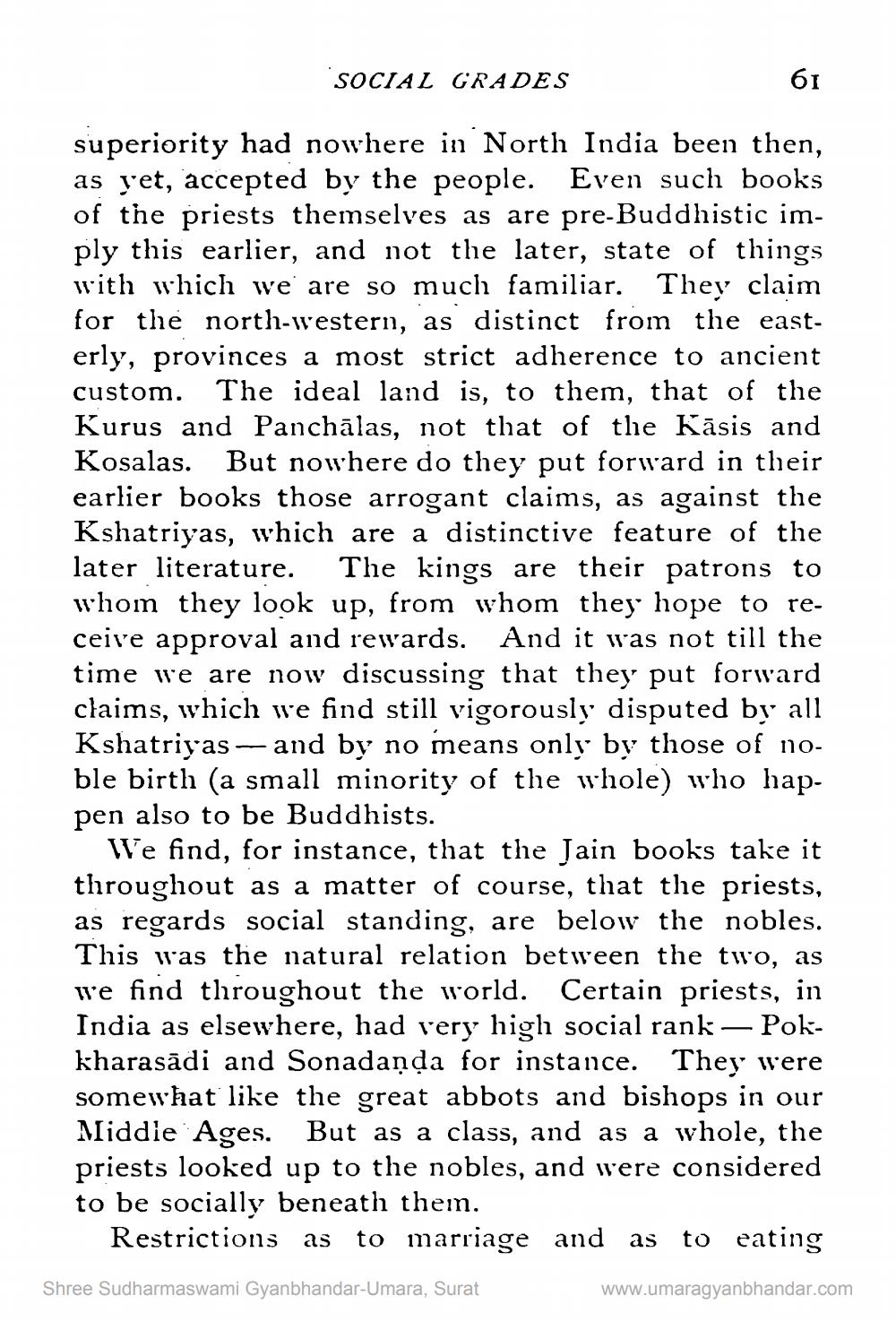________________
SOCIAL GRADES
61
superiority had nowhere in North India been then, as yet, accepted by the people. Even such books of the priests themselves as are pre-Buddhistic imply this earlier, and not the later, state of things with which we are so much familiar. They claim for the north-western, as distinct from the easterly, provinces a most strict adherence to ancient custom. The ideal land is, to them, that of the Kurus and Panchālas, not that of the Kāsis and Kosalas. But nowhere do they put forward in their earlier books those arrogant claims, as against the Kshatriyas, which are a distinctive feature of the later literature. The kings are their patrons to whom they look up, from whom they hope to receive approval and rewards. And it was not till the time we are now discussing that they put forward claims, which we find still vigorously disputed by all Kshatriyas — and by no means only by those of noble birth (a small minority of the whole) who happen also to be Buddhists.
We find, for instance, that the Jain books take it throughout as a matter of course, that the priests, as regards social standing, are below the nobles. This was the natural relation between the two, as we find throughout the world. Certain priests, in India as elsewhere, had very high social rank — Pokkharasādi and Sonadanda for instance. They were somewhat like the great abbots and bishops in our Middle Ages. But as a class, and as a whole, the priests looked up to the nobles, and were considered to be socially beneath them.
Restrictions as to marriage and as to eating
Shree Sudharmaswami Gyanbhandar-Umara, Surat
www.umaragyanbhandar.com




